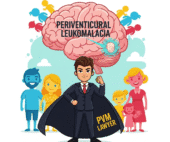Cerebral Palsy (CP), a group of permanent movement disorders affecting muscle control and coordination, impacts countless lives. Early detection of CP is paramount, as it unlocks the door to timely interventions, maximizing a child’s potential for development and improving their long-term outcomes. While traditional diagnostic methods rely on clinical observation and neurological assessments, the burgeoning fields of Artificial Intelligence (AI) and Machine Learning (ML) are offering revolutionary new avenues for earlier and more accurate identification of CP.
The Critical Window: Why Early Detection Matters
The first few years of a child’s life are characterized by remarkable brain plasticity – the ability of the brain to form new connections and adapt. Early intervention during this critical window can significantly influence a child’s motor skills, cognitive abilities, and overall development. Prompt diagnosis allows for the implementation of targeted therapies, such as physical, occupational, and speech therapy, which can help build stronger neural pathways and improve functional abilities. Recognizing the signs of CP early can also alleviate parental anxiety and facilitate access to necessary support systems and resources, such as those offered by organizations like CP Family Help.
AI and Machine Learning: Transforming Early Detection
AI and ML algorithms possess the remarkable ability to analyze vast amounts of complex data, identify subtle patterns, and make predictions with increasing accuracy. In the context of early CP detection, these technologies are being applied in several promising ways:
- General Movement Assessment (GMA) Analysis: The GMA is a well-established method for assessing spontaneous movements in infants, which can indicate neurological abnormalities. AI-powered systems can analyze video recordings of infant movements with a level of detail and consistency that surpasses human observation, potentially detecting subtle signs of CP even before they become clinically apparent.
- Neuroimaging Analysis: Magnetic Resonance Imaging (MRI) is a powerful tool for identifying brain abnormalities associated with CP. ML algorithms can be trained to analyze MRI scans, detect subtle lesions or patterns indicative of CP, and potentially aid in earlier diagnosis, even in infants with non-specific or evolving brain injuries.
- Predictive Modeling using Clinical Data: AI can analyze a wide range of clinical data, including birth history, genetic information, and early developmental milestones, to identify infants at higher risk of developing CP. These predictive models can help target high-risk infants for closer monitoring and earlier intervention.
- Smartphone-Based Movement Tracking: Innovative AI applications are being developed that can analyze infant movements captured on standard smartphone videos submitted by parents. These tools can potentially extend early detection capabilities to families in remote areas with limited access to specialized clinical services.
Benefits of AI and ML in Early CP Detection
The integration of AI and ML into early CP detection offers numerous potential benefits:
- Earlier Diagnosis: AI and ML algorithms can detect subtle signs of CP at a younger age than traditional methods, allowing for earlier intervention during the critical period of brain plasticity.
- Increased Accuracy: The ability of AI to analyze large datasets and identify subtle patterns can lead to more accurate diagnoses.
- Improved Objectivity and Consistency: AI-powered systems can provide objective and consistent assessments, reducing variability between clinicians.
- Enhanced Accessibility: Smartphone-based AI tools can potentially make early detection more accessible to families in underserved areas.
- Personalized Interventions: Earlier and more precise diagnosis can pave the way for more tailored and effective early intervention strategies.
- Reduced Parental Anxiety: Earlier identification can provide families with answers and allow them to access support and resources sooner.
Challenges and Future Directions
While the potential of AI and ML in early CP detection is immense, several challenges remain:
- Data Availability and Quality: Training robust AI models requires large, high-quality datasets of infant movement videos, neuroimaging scans, and clinical data.
- Algorithm Interpretability: Understanding how AI algorithms arrive at their predictions is crucial for building trust and ensuring clinical utility.
- Validation and Clinical Integration: Rigorous validation studies are needed to demonstrate the accuracy and reliability of AI-powered tools in real-world clinical settings.
- Ethical Considerations: Issues related to data privacy, bias in algorithms, and equitable access to these technologies need careful consideration.
Future research will likely focus on addressing these challenges, developing more sophisticated and interpretable AI models, and integrating these technologies seamlessly into clinical workflows. Collaboration between AI researchers, clinicians, and organizations like CP Family Help will be crucial for translating the promise of AI and ML into tangible benefits for individuals and families affected by CP.
Conclusion: A Brighter Future Through Innovation
AI and machine learning hold tremendous potential to revolutionize the early detection of Cerebral Palsy. By leveraging the power of these technologies, we can move towards a future where infants at risk of CP are identified earlier, receive timely and targeted interventions, and have the opportunity to reach their full potential. Continued research, development, and ethical implementation of AI and ML tools offer a beacon of hope for improving the lives of individuals and families affected by CP.
Frequently Asked Questions (FAQ)
How early can AI potentially detect signs of Cerebral Palsy?
AI analysis of General Movement Assessments (GMA) has shown promise in detecting abnormal movement patterns indicative of CP in infants as young as a few weeks or months old, often earlier than traditional clinical diagnosis.
Will AI replace doctors in diagnosing Cerebral Palsy?
It is highly unlikely that AI will completely replace doctors. Instead, AI is envisioned as a powerful tool to assist clinicians in making earlier and more accurate diagnoses by analyzing complex data and identifying subtle patterns that may be difficult for humans to discern.
Is the use of AI in early CP detection currently available in hospitals?
While research in this area is rapidly advancing, AI-powered tools for early CP detection are not yet widely implemented in standard clinical practice. However, ongoing studies and pilot programs are paving the way for future integration.
Is the use of AI in early CP detection currently available in hospitals?
While research in this area is rapidly advancing, AI-powered tools for early CP detection are not yet widely implemented in standard clinical practice. However, ongoing studies and pilot programs are paving the way for future integration.
How can parents contribute to the development of AI tools for early CP detection?
Participating in research studies that involve sharing infant movement videos or developmental data can contribute to the training and validation of AI algorithms. Resources and information about research opportunities may be available through organizations like CP Family Help.
What types of AI are being used for early detection of Cerebral Palsy?
Various AI techniques are being explored, including machine learning algorithms for pattern recognition in movement data and neuroimaging, as well as deep learning models for complex image analysis.
Where can I find more information about the latest research on AI and early CP detection?
You can find information on reputable medical research websites, publications in peer-reviewed journals, and through organizations dedicated to Cerebral Palsy research and support, such as those often listed on CP Family Help.
👉 Fill out our FREE Consultation Form today to speak with a legal expert. Your case could make a difference.




